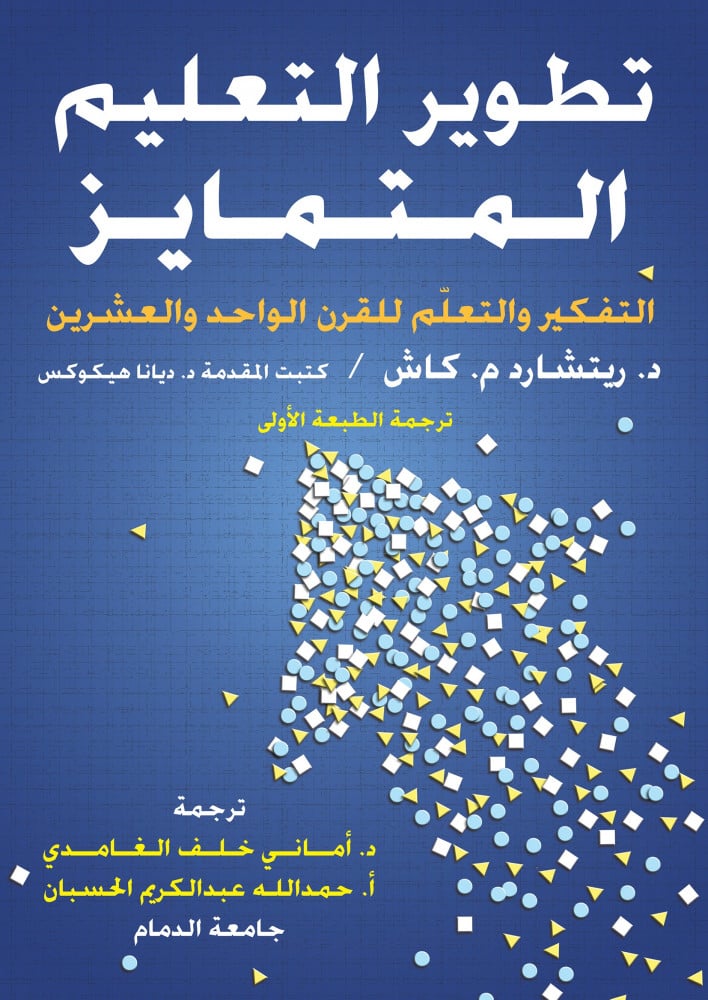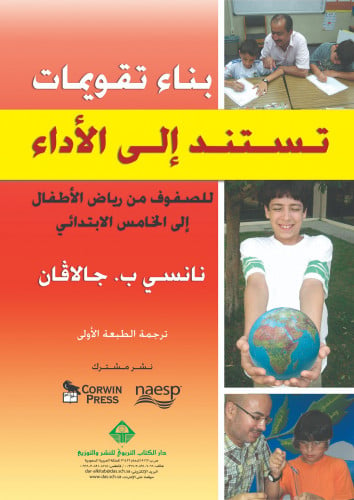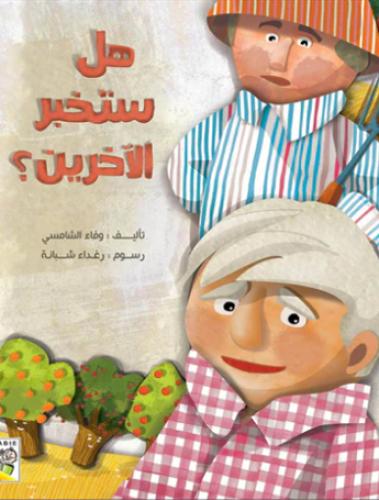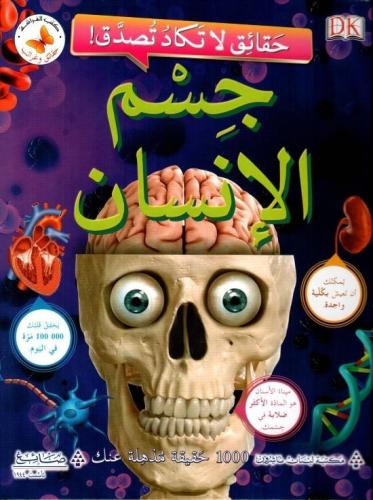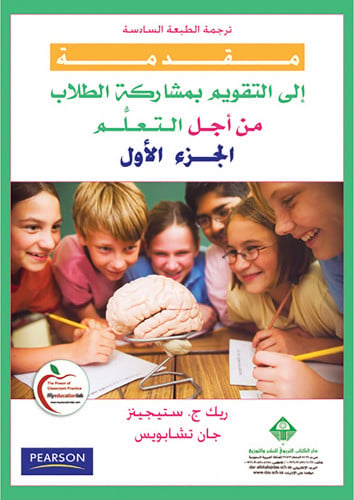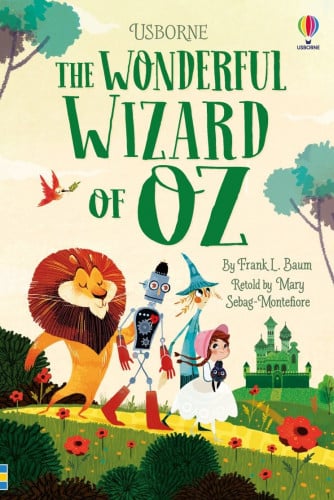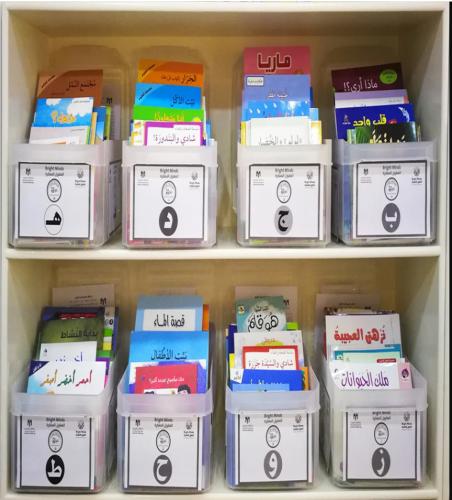AVAILABLE IN ARABIC
About This Book
Do you practice differentiated instruction in your classroom? Are you ready to take it to the next level? Go beyond basic teaching strategies and gain the tools to differentiate the critical thinking, problem solving, and decision making skills at the core of your students’ learning across all content areas.
This advanced K–12 teacher’s guide will transform the way you—and your students—think while you are differentiating instruction. The differentiated instruction strategies in this book will help you:
• Build achievement motivation and self-regulation
• Set new roles for student and teacher that encourage learner autonomy
• Inspire your students’ passion and creativity
• Employ cutting-edge techniques for designing rigorous E4curriculum (Effective, Engaging, Enriching, and Exciting)
Key features include:
• A solid, up-to-date research base that builds on the work of respected experts such as Carol Dweck, Robert Sternberg, Carol Ann Tomlinson, Diane Heacox, Benjamin Bloom, Joseph Renzulli, Robert Marzano, Edward Deci, and Barry Zimmerman
• More than 50 illustrative figures, diagrams, and sample lessons in all content areas
• Foreword by Diane Heacox, Ed.D.
Digital content includes over 40 reproducible forms, templates, handouts, and walk-through checklists (many as customizable PDFs), and a PowerPoint presentation for professional development.
Topics : Differentiated Instruction
Table Of Content
Reproducible Pages
Figures
Foreword by Diane Heacox, Ed.D
Introduction
The Next Level of Differentiation
The Importance of Thinking Skills in
Today's World..
About This Book and Digital Content
How to Use This Book
Part One: Taking Differentiation to the Next Level
Chapter 1: Defining How Differentiation Looks In Today's Classroom
A Primer for Differentiation: The Whets, Hows, and Whys
Dispelling the Myths of Differentiated Instruction
Visible Differentiation: Supporting Teachers Through Observation Practices Technology Use in the Differentiated Classroom
Chapter 2: Defining the Essentials of a Differentiated Curriculum
Skills for a New Century
A Hierarchy of Knowledge: Factual, Procedural, Conceptual
Four Steps to Defining the Essentials of Curriculum
Mapping a Concept-Based Plan of Curriculum
Chapter 3: Advancing Differentiation to New Levels Through a Rigorous Curriculum
What Is a Rigorous Curriculum?
Hallmarks of a Rigorous Curriculum: Effective, Engaging, Exciting, Enriching (E4)
Infusing Rigor Into Your Curriculum
Chapter 4: Motivating and Engaging Learners
What Is Motivation?
Understanding How the Brain Learns
Strategies to Motivate and Engage Students
Using Assessment to Motivate and Engage
Chapter5: Developing Student Self-Regulation
Self-Regulation Theory
Building Self-Regulation Through Goal Setting
Building Self-Regulation Through Mindset
The Student-Centered Classroom
Using Centers and Stations to Develop Self-Regulation
Five Understandings for Developing Self-Regulation for Learning
Chapter 6: The Teaching and Learning Continuum: Building Success Through
Autonomy
When Is the TLC?
Why Build Autonomy?
Framework Supporting the Teaching and Learning Continuum (TLC)
The Four Levels of the TLC Model
Assessment That Builds Autonomy
Part Two: Putting Thinking Skills to Use in the Classroom
Chapter 7: The Thinking Classroom
10 Skills for the Future Workforce
What Is Thinking?
Divergent Thinking vs. Convergent Thinking
Characteristics of a Thinking Student
Characteristics of a Thinking Classroom
Characteristic of a Thinking Curriculum
Methods for Developing Intellectually Disciplined Thinkers
General Strategies to Improve Student Thinking
Chapter 8: A Framework for Thinking: Digging Deeper Into Bloom's Taxonomy
A Brief Introduction to Bloom's Taxonomy
Performing Automatically to Performing Consciously
Building on Bloom's
Putting It All Together The Digging Deeper Matrix (DDM)
Chapter 9: Critical Thinking: Developing Reasoned Thought
What Is Critical Thinking?
General Critical Thinking Strategies
Critical Thinking Strategies in Rending
Critical Thinking Strategies in Writing
Critical Thinking Strategies in Mathematics
Critical Thinking Strategies in Science
Seven Critical Questioning Strategies to Use Daily
Critical Thinking Tools
Chapter 10: Creative Thinking: Stepping Outside the Box
What Is Creative Thinking?
Characteristics of Creative Individuals
Strategies to Develop Creative Thinking
Creative Thinking Activities
Creative "Sponge" 'kelvin.
Additional Creative Activity Ideas
Building a Creative Classroom
Chapter 11: Problem Finding, Problem Solving, and Decision Making
Characteristics of Effective Problem Finders,
Problem Solvers, and Decision Makers
Finding Problems
Solving Problems
Decision Making
A Final Note
Conclusion
References and Resources
Index
About the Author
About the Authors
Richard M. Cash, Ed. D.:

Richard M. Cash is an award-winning author and educator who has worked in the field of education for over twenty-five years. His range of experience includes teaching, curriculum coordination, and program administration. Currently, he is an internationally recognized education consultant (www.nrich.consulting). His consulting work has taken him throughout the United States, as well as into Canada, the Czech Republic, China, England, Indonesia, the Kingdom of Saudi Arabia, Mexico, Poland, Qatar, Spain, South Korea, and Turkey.
Richard received his doctorate in educational leadership and a master’s degree in curriculum and instruction from the University of St. Thomas in Minneapolis, Minnesota. Along with his bachelor’s degree in education from the University of Minnesota, Richard holds a bachelor’s degree in theater from the University of Wisconsin, Eau Claire. For over ten years, he codirected a children’s theater company in Minnesota, and coauthored four award-winning children’s plays. He was recipient of the National Association for Gifted Children’s Early Leader Award (2011), recognizing his leadership in programming for gifted children. Richard was also named the “Friend of the Gifted, 2016” by Minnesota Educators of the Gifted and Talented.
His areas of expertise are educational programming, rigorous and challenging curriculum design, differentiated instruction, 21st century skills, brain-compatible classrooms, gifted and talented education, and self-regulated learning. Dr. Cash is the author of Advancing Differentiation: Thinking and Learning for the 21st Century (2011), a finalist for the Association for Educational Publishers Distinguished Achievement Award; Self-Regulation in the Classroom: Helping Students Learn How to Learn; and coauthor of (with Diane Heacox) Differentiation for Gifted Learners: Going Beyond the Basics (2014), winner of The Legacy Book® Award for Outstanding Educators Publication.
ISBN: 9786038147092
Author: Richard M. Cash, Ed. D.
Publisher: Educational Book House
Publish Year: 2015
Size: 17*24cm
Pages number: 328

